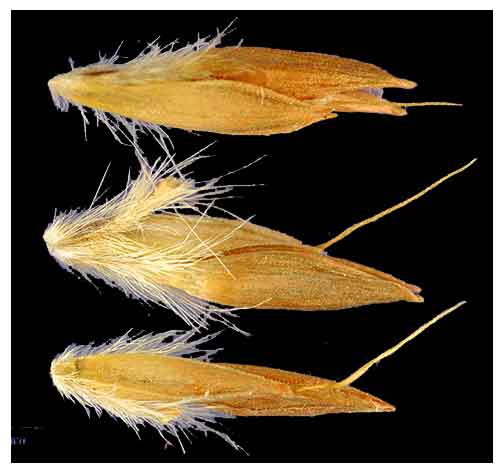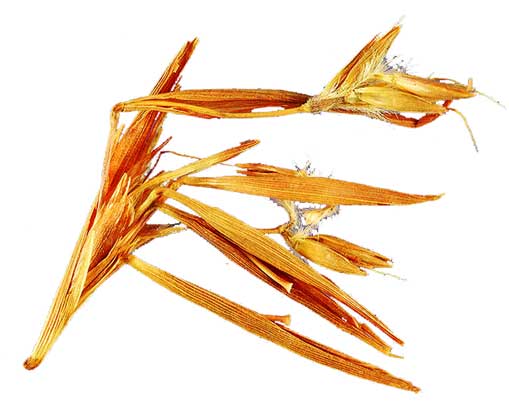
Family • Gramineae
Balaniu
Cymbopogon tortilis (J.Presl) A.Camus
CITRONELLA GRASS
Ya xiang mao
| Scientific names | Common names |
| Andropogon hamatulus Hook. & Arn. | Balaniu (Bon.) |
| Andropogon nardus subsp. hamatulus (Hook. & Arn.) Hack. | Citronella grass (Engl.) |
| Andropogon nardus var. tortilis (J. Presl) Merr. | Ceylon citronella (Engl.) |
| Anthistiria tortilis J.Presl. | |
| Cymbopogon hamatulus (Nees ex Hook. & Arn) A. Camus | |
| Cymbopogon tortilis (J.Presl) A.Camus | |
| Cymbopogon tortilis (J.Presl) Hitchc. | |
| There is a confusing crossover of synonyms for Andropogon tortillis, A. nardus, Cymbopogon nardus, C. tortilis. MMPND / The Plant List / GLOBinMED | |
| The vernacular names below are for Cymbopogon nardus (L.) Rolfe MMPND | |
| Also see: Citronella (Cymbopogon winterianus) | |
| Cymbopogon tortilis (J.Presl) A.Camus is an accepted name. The Plant List | |
| Other vernacular names |
| BURMESE: Kaingbyu-mi, Myet-hmwe, Sabalin-hmwe, Singu-myet. |
| CHINESE: Niu qiao xiang mao, Ye xiang mao. |
| DANISH: Citronella, Lenabatugræs. |
| DUTCH: Citroenmelisse. |
| FRENCH: Citronelle, Citronnelle de Ceylan. |
GERMAN: Ceyloncitronell, Citronellgras, Nardusgras. |
| GREEK: Kitronella, Lemonochorto. |
| ITALIAN: Citronella di Ceylon. |
| JAPANESE: Kou suigaya, Seiron shitironera, Shitoronera, Shitoronera gurasu. |
| MALAYSIA: Serai wangi. |
| POLISH: Palczatka szczetna. |
| PORTUGUESE: Citronela de Ceilan, Citronela do Ceilão (Brazil), Lenabatu (Brazil). |
| SPANISH: Zacate limón. |
| SWEDISH: Citronellagräs. |
| THAI: Ta khrai hom. |
| VIETNAMESE: Củ sả. |
Distribution Constituents
Studies |
Updated December 2019 / October 2014
![]()
 |
| © Godofredo Stuart / StuartXchange |
| IMAGE SOURCE: Cymbopogon nardus / Citronella grass / Jose Hernandez @ USDA-NRCS PLANTS Database / USDA |
| OTHER IMAGE SOURCE: Cymbopogon nardus / Citronella grass / Jose Hernandez @ USDA-NRCS PLANTS Database / USDA |
Additional
Sources and Suggested Readings |
DOI |
• |
| List of Understudied Philippine Medicinal Plants |
 |

 Botany
Botany Properties
Properties